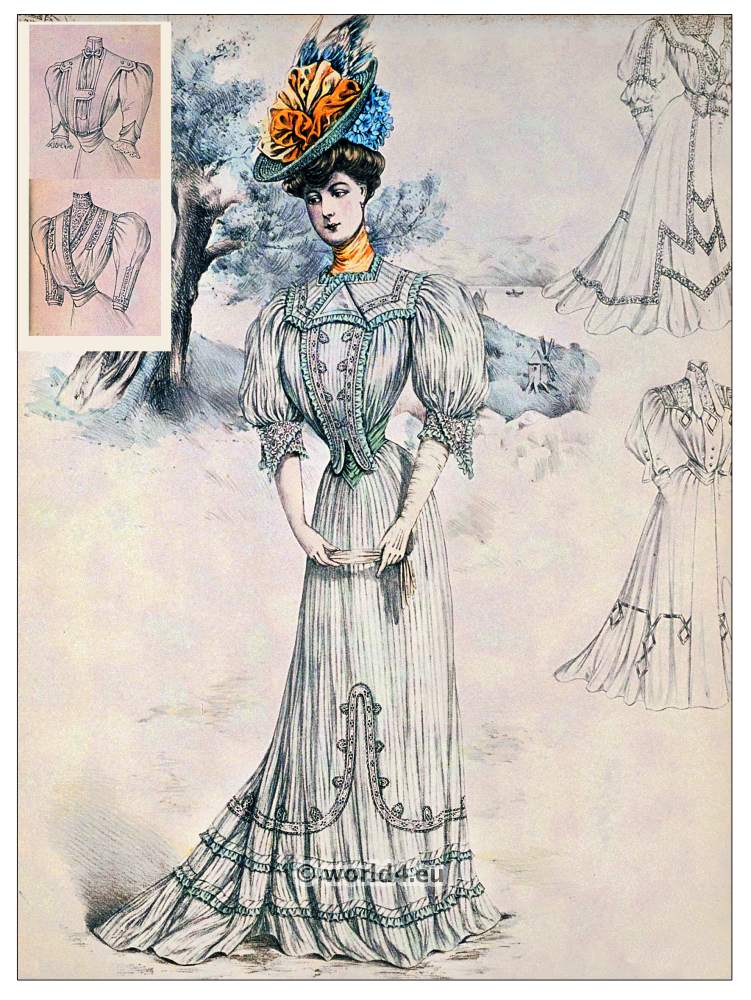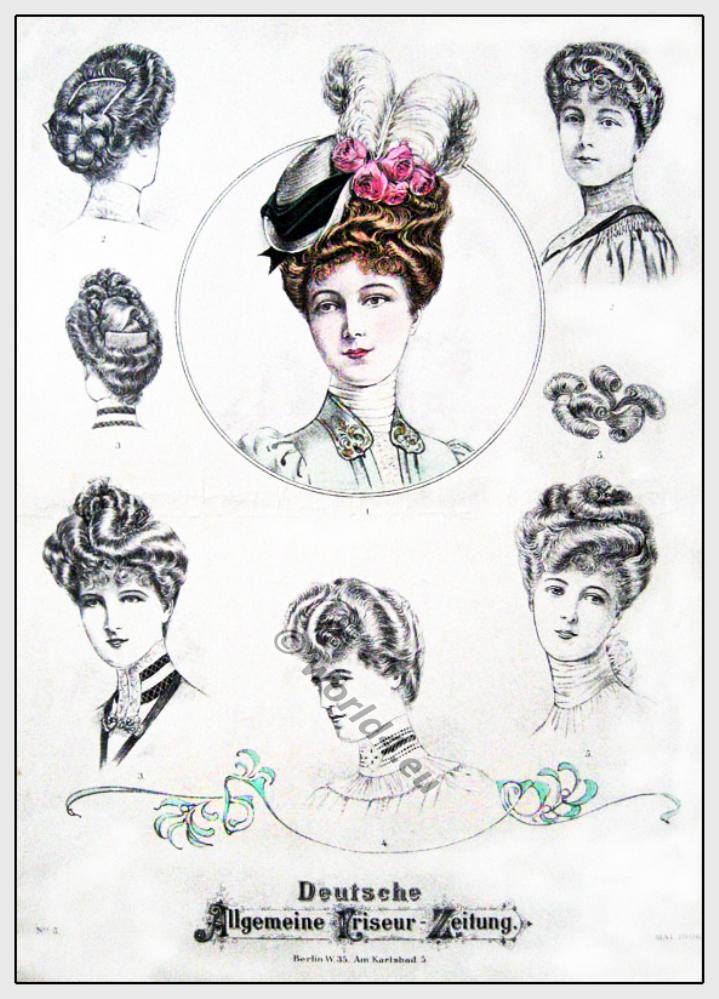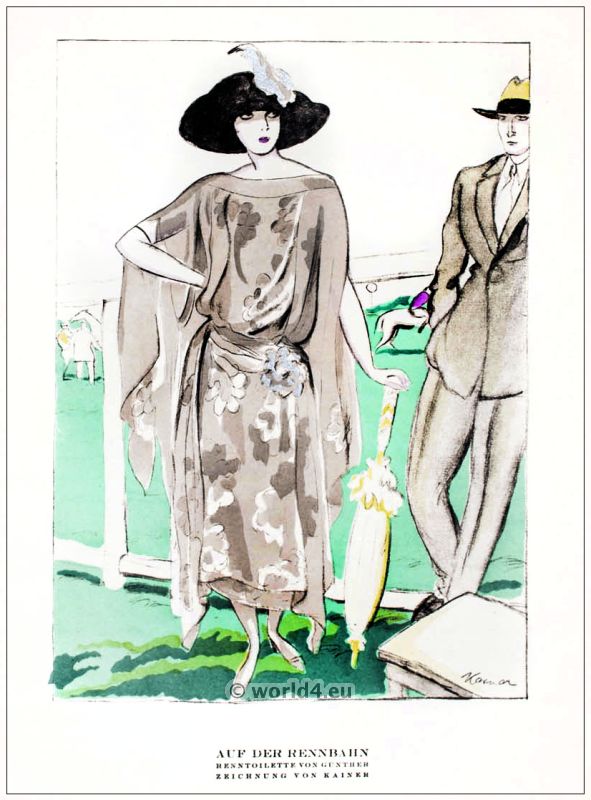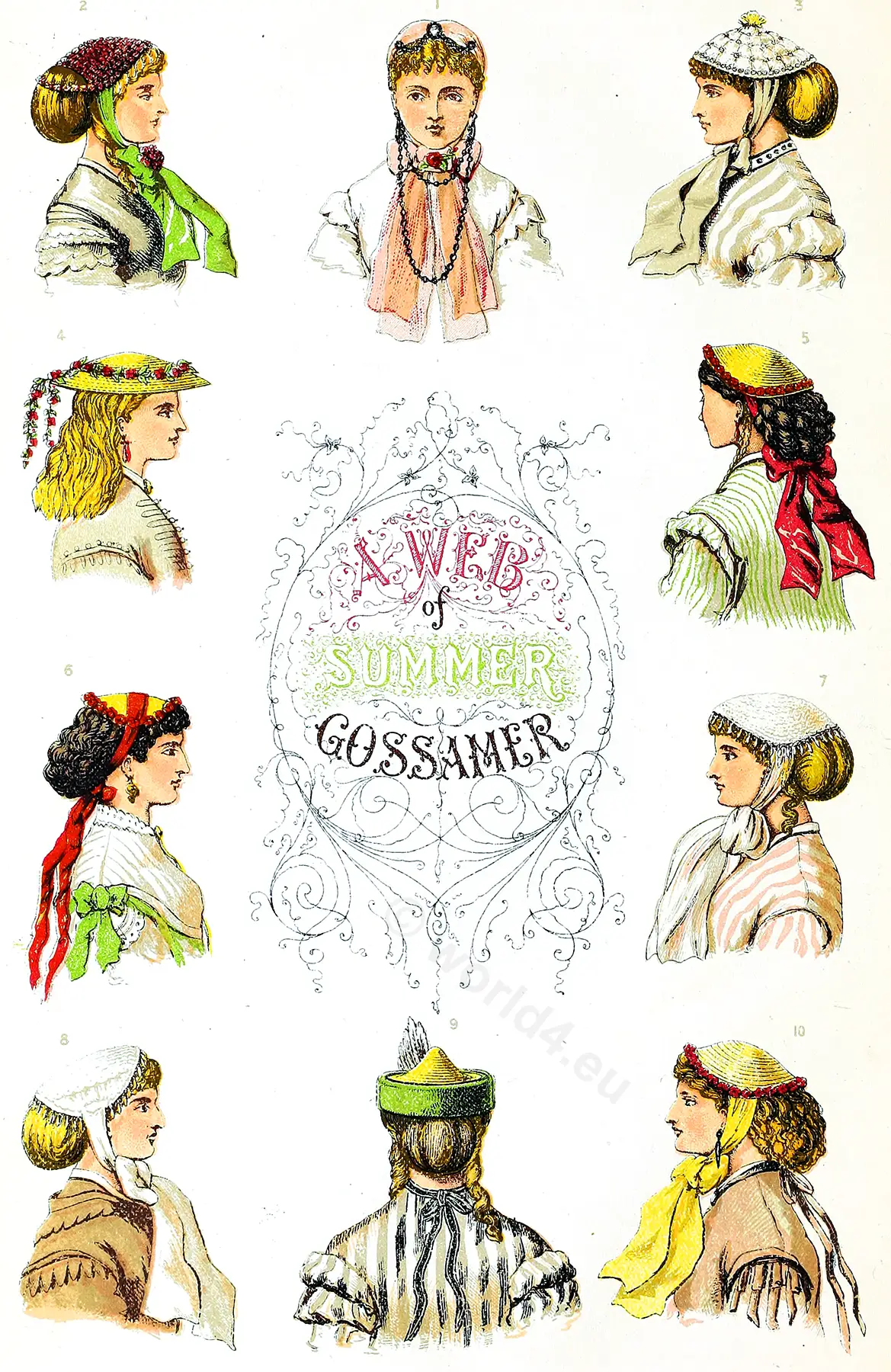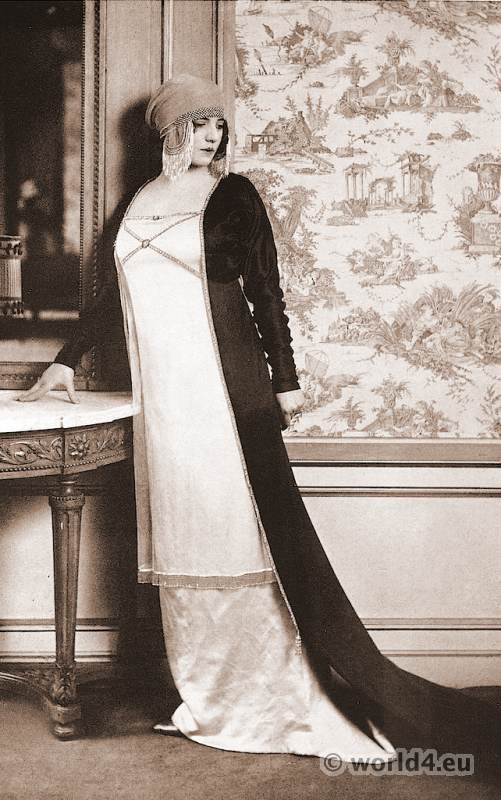Summer toilet of striped Eolienne, 1906.
Corsage with wide collar section, further continuing and extending into sharp cut ends. Big reverse hides the end. Arrangement is framed by ruffles and studded with entredeux and Entredeuxpatten. Fuselage curled under neckline, full bloused springing up. Half-length sleeves with embroidery tulip with folded down top showing dual aperture and frilly garnish and it entredeux patch, interrupted by small flaps.
Eolienne is the name of rips like substance from half silk, which is used for more than a hundred years. For the warp silk was used originally. Meanwhile, the silk was replaced by viscose fibers. Similar materials are Veloutine and Burat.
(German Original Text)
Sommertoilette aus gestreiftem Eolienne.
Korsage mit breiter Kragenpartie, sich weiter fortsetzend und in spitz zugeschnittenen Enden verlaufend. Grosses Revers verdeckt den Schluss. Arrangement ist von Rüschchen eingefasst und mit Entredeux und Entredeuxpatten besetzt. Rumpf unter Halspartie eingekraust, vollblusig aufspringend. Halblanger Ärmel mit Stickereistulpe mit umgelegter Spitze zeigt zweifache Blenden- und Rüschchengarnitur und darüber Entredeuxbesatz, durch kleine Patten unterbrochen.
Source: Le costume moderne. Journal illustré de modes. Specialist journal for the entire women’s costume compartment. Published by C. Heinemann, Berlin 1906.
Related:
- Le style parisien. Les elegances parisiennes 1915. by Lucien Vogel. (Art Nouveau. Fin de siècle, Belle Époque era.)
- France. Haute couture spring season, 1913. (Fin de siècle era.)
- Les Robes de Paul Poiret racontée par Paul Iribe, Paris 1908.
- Paris Fashion Designers in 1916.
- Dolls for the showcase by Lotte Pritzel. 1911.
- Les Chapeaux du Très Parisien Vol. 1., by G.P. Joumard. First edition 1921. (Flapper, Gatsby, Art deco era.)
- Les Chapeaux du Très Parisien Vol. 2,.G.P. Joumard. Second edition 1922.
- Les créations parisiennes. La mode est un art. Published 1929. (Flapper, Gatsby, Art deco era.)
- STYL 1922-1924. German Fashion Magazine. (Berlin Roaring twenties. Flappers, Art deco era.)
- The Incroyables and Muscadins. The French directory dandies.
- Les Incroyables et Merveilleuses. French directoire fashion era.
- The days of the Directoire by Alfred Allinson.
- The Gallery of Fashion by Nikolaus von Heideloff. Regency, Empire, Neoclassical.
- Nymphs and Merveilleuses. Directoire, Neoclassical, Regency, Empire by Octave Uzanne.
- Reign of Napoleon I. 1804 to 1814. French First Empire fashion. (England Regency, Georgian fashion period)
- Reigns of Louis XVIII. and Charles X. 1815 to 1830. The Restoration period, Romantic era, German Biedermeier.
- Romantic fashion in the Reign of Philippe. 1830 to 1848. Victorian era. Crinoline.
- Fashion and costume in the eighteenth century
Discover more from World4 Costume Culture History
Subscribe to get the latest posts sent to your email.

